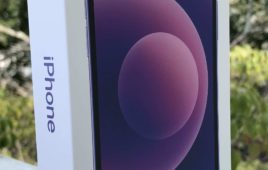As Sprint reported its quarterly financial results Tuesday, executives warned investors that without the pending T-Mobile deal, the U.S.’s fourth-largest carrier will become less of a nationwide competitor.
Sprint and T-Mobile have been pushing hard to sell their proposed $26 billion merger to U.S. regulators, touting benefits like job creation and lower prices, while stressing necessity in order to effectively compete in 5G.
Speaking on Sprint’s earnings call Tuesday, CEO Michel Combes told investors that without T-Mobile, Sprint would not be not be an effective nationwide player. He conceded that while Sprint has made improvements to its network and financials, the company still lacks low-band spectrum, which it needs from T-Mobile – as well as scale and financial resources relative to AT&T and Verizon.
“As a standalone company, we lack the scale to keep pace with the bigger carriers, AT&T and Verizon, in sustained capital investments,” Combes said. “And without additional low-band spectrum, we will face challenges to provide customers with consistency or coverage comparable to that of the two big carriers.”
When asked about the prospects for the company in a few years if the merger doesn’t go through, Combes said Sprint would have to reposition itself and narrow its geographic focus.
“We’ll have to reposition the company in how we play and which battlefield will be ours,” Combes said.
“At the end of the day that means we will be less of a national competitor to AT&T and Verizon,” he added.
The comments are in line with regulatory filings on the matter and come as Sprint reported losing 189,000 postpaid phone subscribers in its fiscal year Q4. Sprint lost 30,000 prepaid subscribers in the period.
Combes noted the company continues to see “very aggressive” device promotions from Verizon and AT&T, and cable operators Charter and Comcast also continue to take share of postpaid gross adds.
In the first quarter, T-Mobile added 656,000 postpaid phone net subscribers, Charter added 176,000, and Comcast added 170,000, while AT&T and Verizon lost 55,000 and 44,000, respectively.
Sprint’s assertion that it needs T-Mobile is not new, as the company has been making that argument to regulators since soon after the deal was announced. However, Wall Street firm MoffettNathanson’s Craig Moffett described Sprint’s most recent “articulations of their predicament” as “the most urgent yet.”
In a Tuesday note to investors, Moffett wrote that not only is Sprint’s network badly deficient, the company now admits its “communications with the investment community have also been ‘highly selective’ at best, and intentionally misleading at worst. They also concede that they touted improvement in certain metrics in order to distract from ongoing deterioration in others.”
The Wall Street Journal recently reported that Sprint salespeople were rewarded to push additional free lines, artificially boosting Sprint’s subscriber numbers.
“The reality of the picture at Sprint –the subscriber base is shrinking, ‘real’ EBITDA is flat to declining, and FCF is barely positive –stands in stark contrast to the improvement in Sprint’s “as-reported” metrics,” Moffett concluded. “Again, this is precisely what Sprint itself has called out in its own regulatory filings.”
Even as executives warned of challenges Sprint will face to remain competitive without T-Mobile, they also said the carrier still plans to launch mobile 5G services in the coming weeks, starting with Chicago, Atlanta, Dallas and Kansas City. Those 5G launch cities will be joined by Houston, Lost Angeles, New York City, Phoenix, and Washington D.C., by the end of June.
Sprint now has 2.5 GHz spectrum deployed on about 80 percent of its macro sites compared to less than 60 percent a year ago. In addition, Combes said the carrier has added 800 MHz to “thousands of sites,” mainly in the Southwest markets.
Sprint also ramped up its small cell deployments, with 30,000 small cells now live, compared to about 5,000 a year ago. The increase includes more than doubling the number of mini macro sites on air year-over-year and the rollout of strand mounts, Combes said.
Sprint is leveraging Massive MIMO as a building block for its mobile 5G service, and the carrier has about 1,500 Massive MIMO sites commercially on air.
“We are making the best of the limited financial and low-band spectrum resources that we have,” Combes said. “Nevertheless, we’re hopeful to complete our merger with T-Mobile, which will allow the combined company to have the breadth and the depth of spectrum to provide a truly consistent national-wide 5G experience.”
As for additional earnings results, Sprint reported wireless service revenue for the period of $5.66 billion. In its fiscal year Q4, Sprint recorded a net loss of $2.3 billion compared to net income of $69 million in the prior year. This included a $2 billion non-cash goodwill impairment charge.
Postpaid churn for the quarter was 1.81 percent.




